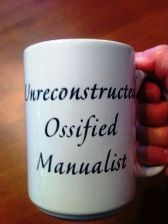From a reader…
QUAERITUR:
Like many other parishes, we have communion under both species. However, the deacon only adds a water to the chalice that the priest is consecrating. He does not add water to the other chalices on the altar. Are those chalices validly consecrated?
The old manuals such as Sabetti-Barrett describe as a grave violation of law the failure of the priest to add some water to the chalice. However, they were describing the addition of water to one chalice, not many… which is an innovation in the Roman Rite.
In the ancient Mediterranean world, wine was always cut with some water. It is likely that Our Lord did the same at the Last Supper when He instituted the sacrament of the Eucharist. Since the earliest days, water was added to the wine. Also, the water is a symbol of our humanity being taken by the Second Person of the Trinity into an indestructible bond with His divinity. So, the addition of water is also a theological statement against the heresy of monophysitism.
While it is a serious abuse to omit the addition of water to a chalice of wine to be consecrated, the lack of water does not make the wine invalid material for consecration.
On the other hand, if I am not mistaken, the rubrics only mention water being added to a singular chalice. A solution could be to add water to the source of wine for the chalices to be consecrated.
That said, it is also extremely important not to put too much water into the wine. Too much water does render the wine invalid matter. Add a tiny amount of water, and you have a chalice with wine cut with water. Add a lot of water, and you have a chalice with water cut with wine.
In the manual of dogmatic theology by Tanquerey, that dear tonic for the soul, I found the opinion that “quinta pars aquae ad vinum corrumpendum non sufficiat … a fifth part of water isn’t enough to break [the substance of] the wine”, and thus render it invalid matter for consecration.
20%
Bottom line, we want to have just a tiny bit of water put into the wine. Ideally, drops. And we want to make sure that they don’t simply adhere to the inside of the cup of the chalice.

Scruple spoon with friends,
to provide scale.
This is why at the offertory careful, diligent priests will use what is nicknamed a “scruple spoon”, a tiny dipper-shaped tool with with they dip up a tiny quantity of water from the cruet to put into the wine in the chalice. Use a scruple spoon and you never have to worry that, for reasons of surface tension of the water or the shape of the cruet or the unsteadiness of hand of the priest or deacon, too much water might be inadvertently added to the wine.
BTW… the name “scruple spoon” may come from the unit of measurement, a scruple , rather than qualms or doubts about an action.
Priests must take care to avoid the the Ketchup Bottle Technique of Chalice Preparation™ when the water in the cruet is being stubborn. You know the poem by Richard Armour (not Ogden Nash):
Shake and shake
the catsup bottle
first none’ll come
and then a lot’ll.
Lot’ll = bad.
When that happens the priest should either add a more wine or even start over.
Why?
Because we never never never fool around with the validity of matter of sacraments.
If there is even the slightest doubt in his mind, Father should act to correct the situation before moving on.
Unreconstructed Ossified Manualists UNITE!
Let Scruple Spoons abound!
Promote the New Evangelization!




















